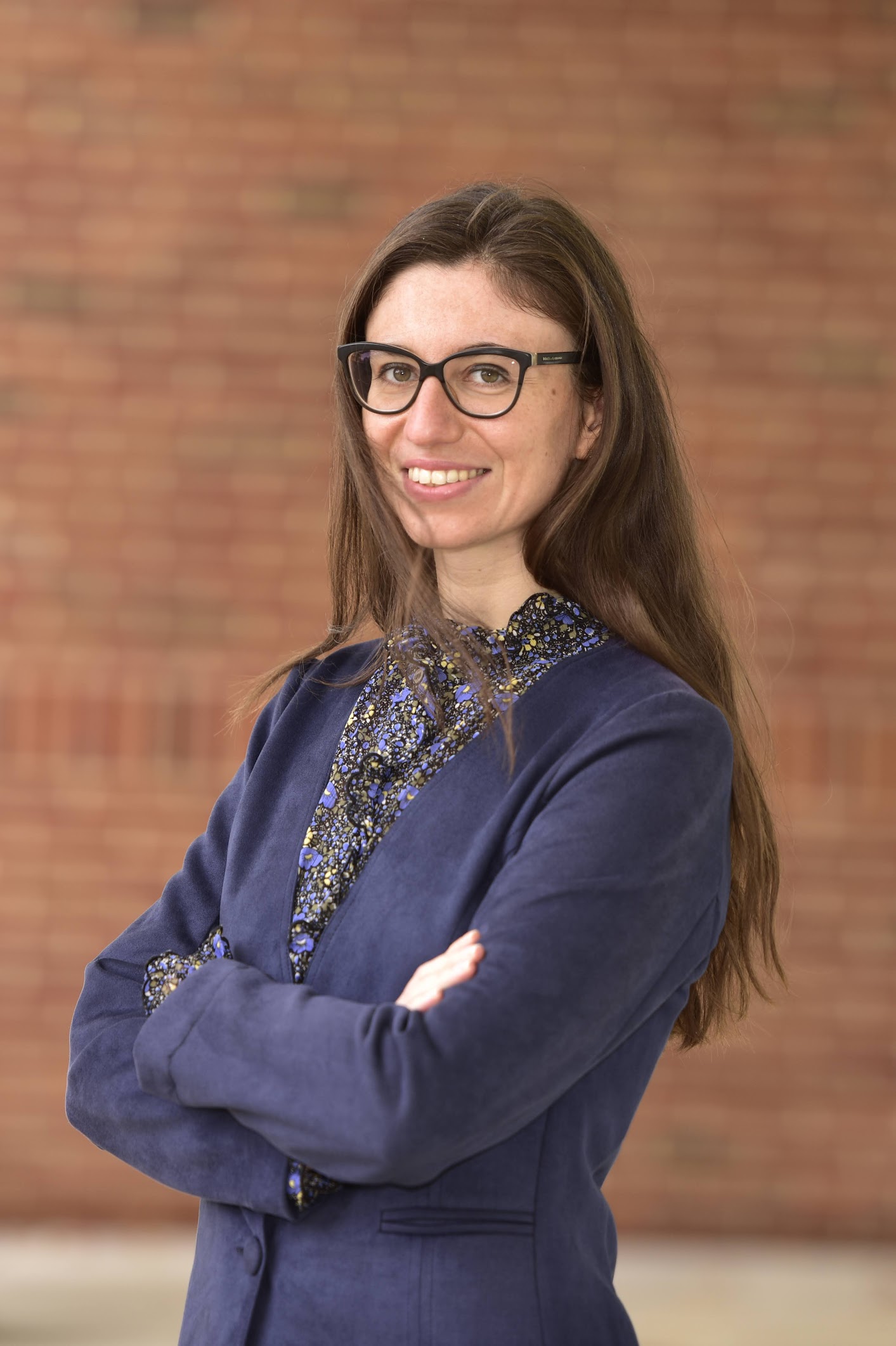 |
 Metamaterials, whose structures can be manipulated in order to produce a particular set of properties, have long been of interest to engineers, but until now little attention has been paid to how they interact with fluids. Metamaterials, whose structures can be manipulated in order to produce a particular set of properties, have long been of interest to engineers, but until now little attention has been paid to how they interact with fluids.
Eleonora Tubaldi, an assistant professor of mechanical engineering at the University of Maryland (UMD) aims to close this research gap with support from a National Science Foundation CAREER award announced in April. The highly competitive award, considered one of the most prestigious available for early career faculty, is given to researchers with the potential to lead major advances in their fields.
Tubaldi, who has a research background in both metamaterials and fluid-structure interaction, will receive $702,211 over five years to support this endeavor, which could lead to more effective heart stents, robots that can shape-shift in response to their environments, and numerous other applications.
“We’re setting out to create materials that have properties that we not only can predict, but harness for specific purposes,” Tubaldi said. “We do this not by altering the chemical composition of the materials, but by manipulating their structure.”
“We then put these metamaterials into contact with flowing fluids in order to explore how they interact.”
On a typical day in her lab, Tubaldi and her students create building blocks—often arches and domes—out of rubber or metal, then combine them into lattices and other configurations. The inspiration, she says, comes in part from her native Italy, home to ancient aqueducts and Rome’s Colosseum.
Such marvels of engineering are similar to metamaterials in that they utilize discrete units, such as arches, in order to distribute energy and loads in a particular way. But while these structures are static—the Colosseum, after all, was built to stay still—Tubaldi’s metamaterials are intended to be dynamic, reconfiguring themselves in response to external stimuli.
“Engineering has traditionally sought to keep things stable,” Tubaldi said, “Instability can lead, for instance, to disasters such as the Tacoma Bridge collapse, or to unwanted flutter in an airplane’s wings. But in my work, we’re actually trying to harness instability and direct it to our purposes. And we’re doing this specifically within the context of fluids.”
In the case of cardiovascular implants, for instance, the goal is to better mimic the properties of the human aorta, which responds flexibly to blood flow, expanding and contracting. Current stents are rigid and thus incapable of such a dynamic response. Tubaldi’s research could help change that.
“With a stent made out of a metamaterial, the flow would act on it, and then it would respond to it in a way that we can predict,” Tubaldi said.
Combining metamaterials and fluid dynamics could also yield new approaches to underwater robotics. Unlike the stereotypical, C3PO-like robot with its gleaming, rigid shell, a robot made of metamaterials could shape-shift in response to the flow that surrounds it.
“We’re hoping to integrate our work with current advances in soft robotics,” Tubaldi said.
In addition to funding research, the NSF grant will also support several educational initiatives planned by Tubaldi, including a collaboration with a local high school and an outreach program to be conducted jointly by NASA and the Italian Embassy.
A member of the UMD mechanical engineering faculty since 2020, Tubaldi has published extensively, including in Advanced Materials Technologies, Nature Communications, and Journal of Biomechanics. She received her Ph.D. in mechanical engineering from McGill University in 2017.
Tubaldi is among several current faculty members in the department to have received NSF CAREER awards, including Damena Agonafer, Michel Cukier, Don DeVoe, Hosam Fathy, Mark Fuge, Samuel Graham, Jr. (Dean, A. James Clark School of Engineering), Katrina Groth, Jin-Oh Hahn, Ken Kiger, Johan Larsson, Elisabeth Smela, Ryan Sochol, Jelena Srebric, and Miao Yu.
Related Articles:
Miao Yu receives NSF funding to develop ice-measuring sensors
Dutt Receives NSF CAREER Award
Four Clark School Faculty Receive CAREER Awards
Sarah Bergbreiter wins NSF CAREER Award
Tuna-Inspired Mechanical Fin Could Boost Underwater Drone Power
Huertas Cerdeira Receives NSF CAREER Award
Diving Deeper into Competition, and Recruitment
Yu Named Elkins Professor
Dutt is PI on NSF-Funded Quantum Research Grant
Modi Briefed on UMD-led Aquaculture Research
May 15, 2023
|

